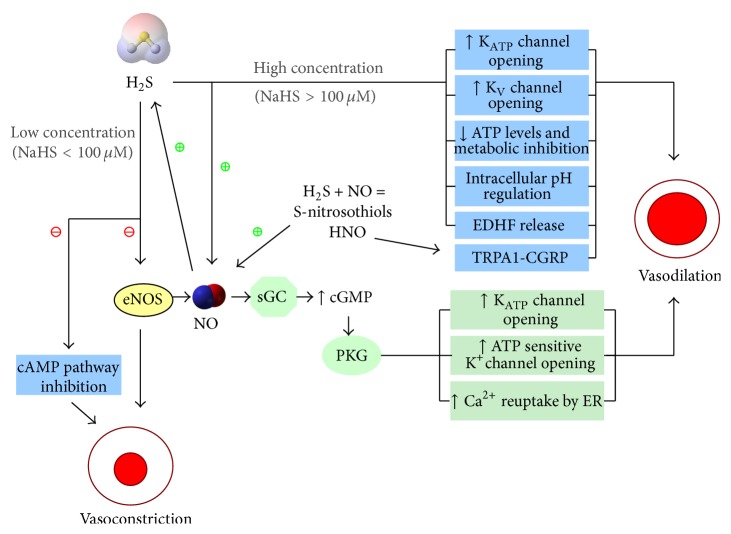Figure 5.
Regulatory effect of NO, H2S, and S-nitrosothiols on vascular tone. Depending upon the concentration, H2S exerts biphasic response on vascular tone. At high concentration (NaHS > 100 μM), H2S acts as a potent vasodilator by opening of KATP and KV channels, downregulating ATP levels and cellular metabolism, regulating intracellular pH and release of endothelium-derived hyperpolarizing factor (EDHF). At low concentration (NaHS < 100 μM), however, H2S acts as a vasoconstrictor by inhibiting eNOS-derived NO production and intracellular cAMP pathway. NO, by itself, is a strong vasodilator. Acting via cGMP-PKG pathway, it stimulates opening of KATP and ATP-sensitive potassium channels. It also increases Ca2+ reuptake by endoplasmic reticulum and thus decreases intracellular Ca2+ levels resulting in less contraction. NO signaling is also stimulated by high concentration of H2S, contributing to its vasodilatory effect. S-nitrothiols, derived from interplay between NO and H2S, act as vasodilators mainly via NO signaling.

